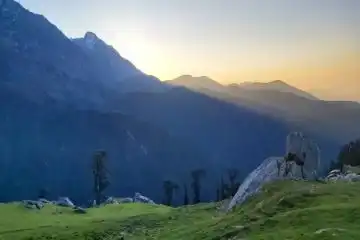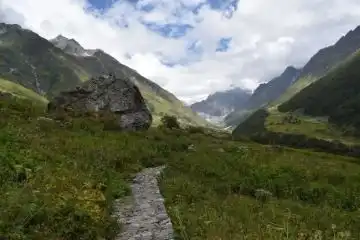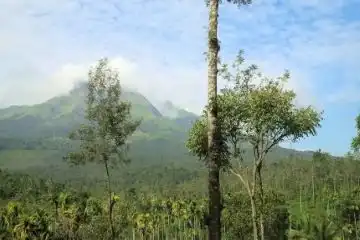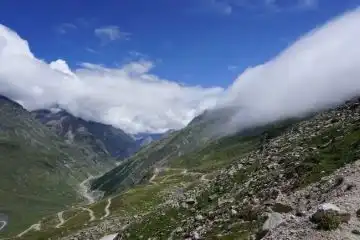How Palampur combines history and nature for perfect getaways
Nestled in the lush Kangra Valley of Himachal Pradesh, Palampur is a serene town. Firstly Palampur combines history and nature in ways that feel both rejuvenating and enlightening. Palampur offers an extraordinary balance between nature's serenity and historical richness. It offers panoramic views of the Dhauladhar ranges, tea gardens that stretch endlessly, and heritage sites steeped in culture. With them, this hill town stands out further as a well-rounded travel destination. Whether you are escaping the city hustle or searching for meaningful cultural experiences, Palampur delivers all. In short, it's more than just a scenic stop-it is a story told through temples, trails, and tea.
1. Colonial Legacy Amid Verdant Tea Gardens
Palampur's identity is rooted in its lush tea plantations, a legacy of British colonial efforts. The British were fascinated by the region's cool climate and fertile soil. Therefore, they began to cultivate tea here in the 19th century. Today, you can explore many traditional estates that still use age-old techniques blended with sustainable practices. Walking through these gardens, you'll sense how deeply Palampur combines history and nature. Here, every tea bush meanwhile narrates a tale of the past.
2. Baijnath Temple: A Spiritual Masterpiece Through the Ages
Located about 16 kilometers from Palampur, the Baijnath Temple. It is one of the oldest living Shiva temples in North India. Built in 1204 AD by local merchants, this sacred site showcases detailed Nagara-style stone carvings. It stands further as a testament to the region's deep spiritual roots. Surrounded by forested slopes and the flowing Binwa River, the setting enhances the temple's peaceful ambiance. The natural beauty of Narkanda also calls the peace and nature lovers towards it. Pilgrims and history buffs alike are drawn to this location, where ancient legends meanwhile echo through every stone.
3. Andretta Village: Artistic Heritage in a Natural Setting
Few places reflect the cultural and natural charm of Palampur for example Andretta Village. Founded in the early 20th century, the village blossomed into a creative hub. This village if a perfect example of how Palampur combines history and nature at its best. It celebrates Himachali art, theatre, and pottery in an open-air museum-like setting. With the Dhauladhar mountains as a backdrop, this village is a haven for artists and travelers. Here, they can meanwhile seek an offbeat yet meaningful experience. In short, it's where stories, creativity, and landscapes converge effortlessly.
4. Immersive Tea Garden Walks and Tastings
Walking through Palampur's tea estates is a soothing and immersive experience. The region is dotted with family-run plantations welcoming visitors for hands-on experiences like tea plucking and leaf rolling. You can stroll through rows of aromatic bushes. Meanwhile, you can learn about the traditional oxidation process and the differences between white, green, and black teas. These guided walks are meanwhile perfect for eco-conscious travelers. They further offer scenic photo opportunities with the majestic Dhauladhars watching over you.
5. Neugal Khad: A Perfect Blend of Peace and Power
The Neugal Khad stream flows with gentle ferocity during monsoon. It carves through rocky paths while offering mesmerizing views. Flanked by pine trees and flowering rhododendrons in spring, this river is ideal for unwinding or capturing nature photography. It's one of the best examples of how Palampur combines history and nature you're never far from either. Above all, there are scenic spots along the banks that provide panoramic views of the valley.
6. Charming British-Era Bungalows and Architectural Echoes
Palampur's streets are sprinkled with remnants of British architecture. That is comprised of stone churches, old schools, and colonial bungalows with wide porches and wooden beams. However, some of these structures now serve as heritage homes or private residences. The blend of antique architecture with natural surroundings firstly creates an authentic atmosphere. These historical homes give insight into the lifestyle of early settlers who first envisioned Palampur as a retreat.
7. Gopalpur Zoo and Dhauladhar Nature Park
Just a short drive from Palampur, Gopalpur Zoo serves as a small yet well-maintained center for regional wildlife. It houses species for example Himalayan black bears, leopards, barking deer, and vultures. Surrounded by dense pine forests, this nature park provides an educational and family-friendly experience. What further makes this zoo special is its backdrop-the majestic snow peaks visible in the distance. Above all, it's an ideal day trip that combines wildlife appreciation with nature walks and picnic spots.
8. The Palampur Tea Factory: A Living Museum
Established in the mid-20th century, the Palampur tea factory continues to produce high-quality tea. Along with that it meanwhile preserves traditional methods. A guided tour offers a deep dive into the tea-making process, from the drying of fresh leaves to their oxidation and packaging. Above all, it's more than just a factory-it's a heritage site where industry meets legacy. Visitors often leave with locally made blends that capture Palampur's unique climate and terrain.
9. Treks that Trace Ancient Routes and Local Lore
Palampur is surrounded by trails that once served as trade and pilgrimage routes. The Rajgundha trek, Triund trail, and Bir-Billing hike are favorites among adventure seekers and nature lovers. Along these routes, you'll meanwhile pass shepherd villages, ancient shrines, and alpine meadows. Trekkers often stay in traditional Himachali homestays that offer local meals and warm hospitality. These trails are not only paths-but they're also timelines. It further shows how Palampur combines history and nature in a perfect manner. That makes history and nature inseparable.
10. Tashi Jong Monastery: Tranquility and Tibetan Culture
The Tashi Jong Monastery lies on the outskirts of Palampur and is a vibrant center of Tibetan Buddhism. It is home to monks of the Drukpa Kagyu lineage. This monastery is adorned with colorful murals, golden statues, and fluttering prayer flags. The tranquil surroundings and humming chants further make it a deeply spiritual experience. Visitors can meanwhile attend prayer sessions or join art workshops. They can do all that while appreciating the peaceful harmony between culture and nature.
11. Local Markets and Cultural Flavors
Palampur's bustling markets and weekly haats offer a glimpse into local life. Here, You will find handmade shawls, Kangra miniature paintings, and fresh produce grown in the surrounding hills. Food lovers should not miss trying siddu, madra, or chha ghost-regional dishes. That meanwhile reflect the culinary heritage of Himachal. The markets are a melting pot where artisans, farmers, and travelers cross paths. It further add vibrancy to the town's cultural mosaic.
12. Sustainable Homestays and Nature-Focused Retreats
Sustainability and eco-tourism are increasingly shaping Palampur's hospitality scene. Many boutique retreats and village homestays promote responsible travel through farm-to-table dining, solar energy, and waste reduction. These lodgings offer a peaceful atmosphere, personalized service, and a deep connection to the land. Guests often participate in farming, pottery, or yoga, making the stay a wholesome and conscious experience. It's here that Palampur combines history and nature while looking toward the future.
Conclusion: Where the Past and Present Embrace Nature
From centuries-old temples and British tea estates to forested trails and peaceful monasteries, Palampur is a serene destination. That wears its legacy proudly. It's not only a hill town; but it's also a living, breathing story of resilience, tradition, and nature's unspoiled beauty. You may watch the clouds roll over tea gardens or discover art in a tucked-away village. In each aspect, you will feel how deeply Palampur combines history and nature to offer the perfect getaway. Above all, it is the one that lingers in your memory long after you leave.




